
It’s usually the editors’ job at eSchool News to create our own “Question of the Week” for our newsletters, but a few weeks ago we received a request from a reader that we ask our followers: “What are some ways technology helps in the education of ELL students?”
From award-winning software, to a teacher-created program that needs peer input, our readers offered some useful ways in which technology can help English-language learners and those for whom English is a second language. Here are six of the best responses (edited for brevity).
“One great way technology can help ESL students is to provide online English language teaching drills and interactive lessons in language arts. I have developed a program for this that can also be tweaked to better serve English language learners. It is not for sale just yet, because I need to pilot it and I’m looking for some schools to test it. Please check out my website and you’ll see what I’m talking about (any feedback you can provide will be greatly appreciated).
“I am a Spanish teacher, and this is a totally new endeavor for me. The technology we used is low-grade, so it might not sound like it was done in a studio, but it’s sufficient to attract students’ attention, keep them on task, and reach their learning comfort zones. The need is so great for poor readers and migrant students to have an effective language teaching program at their disposal. I hope I will be able to provide that.” —Debra Buffington-Adams, author of the Mastery Reading program, New Heights Educational Services
“[I’m] using DynEd software to ensure tracking [of] student progress and teaching with technology. Knowing the products that work, seeing the research of their proven results, and making powerful decisions to teach ELL students effectively [are key].” —Louise Eggert-Nevins
“Without sounding self-serving, I do know that quite a few teachers (ESL/ELL) in K-12 are using PicLits to teach both Spanish/English and English/Spanish writing skills. There are two methods of writing: DRAG-N-DROP & FREESTYLE. The DRAG-N-DROP has drop-down arrows that allow for verb tenses and capitalization. D-N-D seems most effective for grammar, punctuation, spelling, and vocabulary. FREESTYLE has a more open and creative feel, but both bring to the forefront the importance of writing. We hope to offer the site in Spanish by the end of 2012. We get dozens of PicLits per week that are written in Spanish.” —Terry Friedlander, founder, PicLits.com, Ketchum, Idaho
“At Odyssey Middle School and many other schools in Orange County Public Schools, ELL students have the opportunity to use the Rosetta Stone program. As this is an online-based program, students are able to access it both at school and at home. I have seen immense language proficiency in many of our students! Some have shown incredible growth on the FCAT (state test) after only one year learning English with the help of Rosetta Stone.” —Linda Torres, ELL compliance/reading teacher, Odyssey Middle School, Orange County Public Schools, Fla.
“Non-native English students have difficulty understanding their teacher even under ideal classroom listening conditions. Background noise and sitting far from the teacher—unavoidable conditions in many classrooms—make it even harder. In fact, the speech perception accuracy and listening effort of children who are not native English speakers is similar to children who have 25 to 40 dB hearing losses.
“ELL students in FrontRow classrooms are understanding up to 60 percent better than children in the non-amplified classrooms. According to Carl Crandell and other researchers at the University of Florida, ‘amplification significantly improved the perceptual abilities of ESL children.’ By ensuring that the teacher’s voice is clarified and evenly distributed around the classroom, FrontRow sound systems can be tremendously helpful to English language learners—who have particularly strong speech perception difficulties when seated in the middle or rear of the classroom. See the study.” —Stephanie Seufert for FrontRow
[Editor’s note: Many other companies offer classroom amplification systems as well, including (but not limited to) Audio Enhancement, Califone, Crestron, Extron Electronics, Lightspeed Technologies, Promethean, and SMART Technologies.]
“Animation and technology are universal languages—that’s why they’re the perfect tools for teaching English to non-native speakers. BrainPOP ESL is an award-winning online English language teaching tool. It is a comprehensive, web-based program that combines animated movies, interactive features, and computer skills as it guides students through English language development. Through lively, engaging content, it is designed to teach English to beginning language learners and advance to a sophisticated level of knowledge and competency in both language and academic content.
“By lowering the affective filter, social and academic learning can be reinforced. As a result, students learn English in a fun, non-threatening platform, and practice computer skills at the same time. BrainPOP ESL was developed by experienced language educators and is designed to address the needs of students with diverse learning styles, and at various levels. Check it out: http://www.brainpopesl.com/.” —Beverly Fine for BrainPOP ESL
- #4: 25 education trends for 2018 - December 26, 2018
- Video of the Week: Dealing with digital distraction in the classroom - February 23, 2018
- Secrets from the library lines: 5 ways schools can boost digital engagement - January 2, 2018

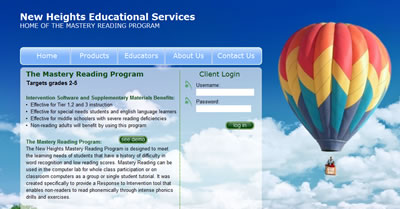
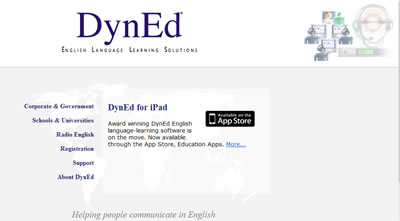
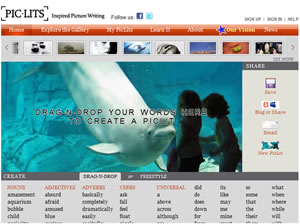
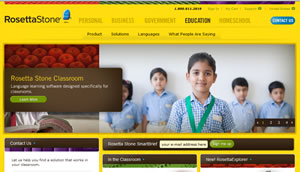

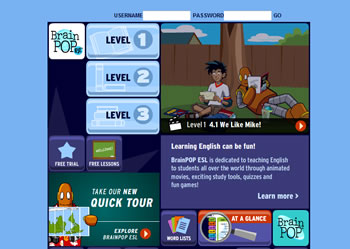

Comments are closed.